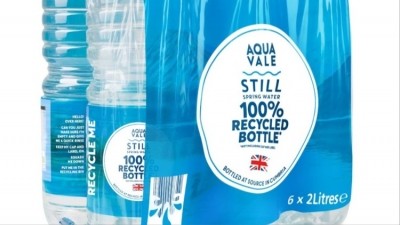News
Poor labelling responsible for 56% of allergic reactions

The research from GS1 UK found that as many as 23 percent of those it surveyed have suffered multiple reactions due to labelling errors or ambiguity.
This has fuelled an anxious nation of allergen sufferers, with 7 in 10 nervous whenever they eat food not prepared by themselves or a close family member.
The study brings to light ‘inadequate’ practices in food labelling, with 60% reliant on reading information on pack to access allergen details but a mere 24% able to always find the information they actually need.
Even if the information is found, people with food allergies are almost twice as likely to distrust it compared to those without (12 percent vs 7 percent). More than half cite fears over accuracy and vague language like ‘may contain’ (52 and 53% respectively), with 27% worried about small text and 13% the omission of their dietary requirements.
The majority resort to searching additional resources for information, including online (41%), with 24% visiting manufacturers’ websites.
However, 43% of those with food allergies say that they would prefer to access product information by scanning packaging with their smartphone.
GS1 UK has been trialling next-gen barcodes – a fusion of the linear barcode and the QR code – which it believes could help provide an answer.
This data is connected to the product’s unique identity and can extend far beyond the limitations of physical packaging, with to store significantly more information and update in real time.
Moreover, according to GS1, those with food allergies are more likely to have their purchasing decisions influenced by the availability of detailed product information via a QR code (83 percent allergic vs 58 percent of non-allergic consumers).
Furthermore, a third said they’d be swayed to select a product with QR codes on pack, with 29% saying it would increase their confidence in the product.
Key information that people with food allergies would like to see when scanning QR codes includes full lists of ingredients (57%) and allergens (56%), health and nutritional information (41%) and details on precautionary allergen labelling (PAL) like ‘may contain’ (37%).
Sarah Knight, parent of two children with food allergies and CEO at The Allergy Team, which supports families, schools and businesses to manage allergies, commented on GS1 UK’s research: “The widespread use of next-generation QR codes on food packaging could provide transparency needed for those with allergies to make better informed decisions.
“It would allow brands to provide greater clarity on what phrases like ‘may contain nuts’ mean. For example, was the item made on a production line with nuts or was it made in a separate part of the factory which reduces the risk of contamination? Details like this could save lives – and will no doubt alleviate huge anxiety for people with food allergies and their families.”
The GS1 UK study also revealed worrying findings around PALs, with 80% of respondents unaware that there is no clear definition of ‘may contain’ among manufacturers.
An additional 73% also didn’t realise that there is no legal or regulatory guidance for manufacturers regarding PALs, with over half unaware that PAL is entirely voluntary.
“There are devastating consequences of undeclared allergens or unclear labelling,” commented food allergy expert, Professor Adam Fox. “The lack of legislation surrounding precautionary allergen labelling, terms like ‘may contain’ is a huge concern. Next-generation QR codes can only help to provide the transparency needed to keep people with food allergies safe in what has become the potential lottery of food labelling.”
Julianne Ponan MBE, CEO of Creative Nature Superfoods and a sufferer of anaphylaxis to all peanuts, treenuts, sesame seeds and certain additives, argued the current approach is down to idleness.
“Unclear food labelling can be a matter of life and death. A huge number of brands are lazy on labelling. Choosing to protect themselves, not the consumer.
“It would be unacceptable to release food items with labelling that says ‘may contain glass’ - so why is it acceptable to use may contain labelling for ingredients that can be lethal to many consumers in the UK?”
She concluded: “There is a desperate need for a universal agreement of what ‘may contain’ constitutes so consumers can make informed decisions. The adoption of GS1 powered QR codes on food packaging has the potential to revolutionise the much needed transparency, particularly for individuals like myself with allergies.”
The nationally representative research was conducted by Censuswide earlier this month, surveying 1,023 who suffer with food allergies vs 1,000 who do not suffer with food allergies.
Elsewhere, industry figureheads have been debating the future of novel food regulation in the UK, with one business leader saying red tape is stifling innovation.
















